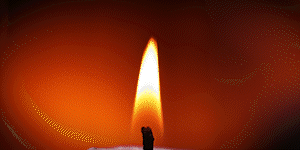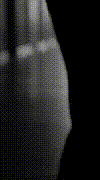-
If you would like to get your account Verified, read this thread -
The TMF is sponsored by Clips4sale - By supporting them, you're supporting us. -
>>> If you cannot get into your account email me at [email protected] <<<
Don't forget to include your username
You are using an out of date browser. It may not display this or other websites correctly.
You should upgrade or use an alternative browser.
You should upgrade or use an alternative browser.
general zod1
TMF Master
- Joined
- Aug 24, 2002
- Messages
- 815
- Points
- 0
Cool pics Kalamos Is the last pic you tickling some poor female?
Kalamos
Level of Lemon Feather
- Joined
- Jul 13, 2003
- Messages
- 12,947
- Points
- 63
Glad you liked them.
It's quite older stuff, something I did before joining the TT, so it was just an "average" skeletal tickler. 😀
Oh, sometimes I used other's props or characters - I found them on the web, but I'm not sure if copyrights apply.
Tell me if I used a prop you consider rightfully yours, guys. 🙂
Reg's!
It's quite older stuff, something I did before joining the TT, so it was just an "average" skeletal tickler. 😀
Oh, sometimes I used other's props or characters - I found them on the web, but I'm not sure if copyrights apply.
Tell me if I used a prop you consider rightfully yours, guys. 🙂
Reg's!
GEORGIATKLER
3rd Level Yellow Feather
- Joined
- Nov 27, 2003
- Messages
- 3,527
- Points
- 36
Render 25 & 27 Rendered Me...... All Nice Drawings K. You Say Poser Is Not Your Favorite Medium. What Would You Change/add/delete? Is It A Difficult Software(?) To Use? They All Look Good To Me.
Kalamos
Level of Lemon Feather
- Joined
- Jul 13, 2003
- Messages
- 12,947
- Points
- 63
GULT: Glad you liked them. 🙂
I can't speak for the later releases, but basic p4 models are nice looking as long as you don't "strain" their joints too much.
Have them crouch, or bend too much, and a lot of stray pixels will appear, especially around the elbows and knees.
The knee area is extremely critical, IMHO: the basic models can be likened to plastic dolls. If you bend their knees, the tight won't relax, and the knee will look almost bulky.
This problem can be licked with finer models, each sold separately [just like action figures from the fab '80s 😀 😀 😀 ] or by applying morphs, which add animation zones and can be used to artificially modify the "muscle structure" of particular areas.
I suppose pro poser artists use them. 🙂
A problem I sometimes perceived, as a novice at poser art, is: pics look a bit like the same.
You can recognize poser art immediately, and it is harder to pinpoint an artist by his/her style, unless great care is taken to make the models unique.
On the other hand, posing a figure is quite straightforward, and while I don't quite like the style of the basic models [they look too thin to me] they are a breeze to use, compared to most 3d progs. 🙂
Oh! And I don't like their feet. 😀 😀 😀
A great feature is lighting: you can set up different light sources, and spice up the pics a lot.
Using it wisely, you can hide the almost plastic quality of the models [basic hair models are lumpy] and make the whole scene much more dramatic and life-like.
🙂
Reg's!
I can't speak for the later releases, but basic p4 models are nice looking as long as you don't "strain" their joints too much.
Have them crouch, or bend too much, and a lot of stray pixels will appear, especially around the elbows and knees.
The knee area is extremely critical, IMHO: the basic models can be likened to plastic dolls. If you bend their knees, the tight won't relax, and the knee will look almost bulky.
This problem can be licked with finer models, each sold separately [just like action figures from the fab '80s 😀 😀 😀 ] or by applying morphs, which add animation zones and can be used to artificially modify the "muscle structure" of particular areas.
I suppose pro poser artists use them. 🙂
A problem I sometimes perceived, as a novice at poser art, is: pics look a bit like the same.
You can recognize poser art immediately, and it is harder to pinpoint an artist by his/her style, unless great care is taken to make the models unique.
On the other hand, posing a figure is quite straightforward, and while I don't quite like the style of the basic models [they look too thin to me] they are a breeze to use, compared to most 3d progs. 🙂
Oh! And I don't like their feet. 😀 😀 😀
A great feature is lighting: you can set up different light sources, and spice up the pics a lot.
Using it wisely, you can hide the almost plastic quality of the models [basic hair models are lumpy] and make the whole scene much more dramatic and life-like.
🙂
Reg's!
Last edited:
Kalamos
Level of Lemon Feather
- Joined
- Jul 13, 2003
- Messages
- 12,947
- Points
- 63
Tnx man... 🙂
[Ma perchè devo parlare inglese, quando entrambi parliamo italiano? Misteri della rete]
Cerco di valutare le pose e le proporzioni come se stessi facendo un disegno...
La comodità ENORME di poser è che puoi realizzare una scena complessa anche un pezzo alla volta.
Un disegno ti costringe a valutare spazi e volumi: qui i volumi possono essere adattati man mano che crei la scena. Ed è un vantaggio notevole.
[No, my english bone doesn't work today, guys. Sorry.]
[Ma perchè devo parlare inglese, quando entrambi parliamo italiano? Misteri della rete]
Cerco di valutare le pose e le proporzioni come se stessi facendo un disegno...
La comodità ENORME di poser è che puoi realizzare una scena complessa anche un pezzo alla volta.
Un disegno ti costringe a valutare spazi e volumi: qui i volumi possono essere adattati man mano che crei la scena. Ed è un vantaggio notevole.
[No, my english bone doesn't work today, guys. Sorry.]
nessonite1
3rd Level White Feather
- Joined
- Sep 20, 2003
- Messages
- 9,517
- Points
- 0
Wow!! Amazing, Kalamos! You are truly amazing.
I must must must try Poser! Any chance itll run wellon anolder computer? Specifically a p3 550 with 32 megs of video?
I must must must try Poser! Any chance itll run wellon anolder computer? Specifically a p3 550 with 32 megs of video?
cosquillero1
4th Level Yellow Feather
- Joined
- Dec 22, 2002
- Messages
- 3,845
- Points
- 0
Nice artwork Kalamos, thanks you for sharing !!! 😉 :happy::happy::happy::happy::happy:.
Kalamos
Level of Lemon Feather
- Joined
- Jul 13, 2003
- Messages
- 12,947
- Points
- 63
-> Ness
Hello there! 🙂
Long time no see - as I used to say to a friend of mine whom... well... I rarely got to... see. 😀 😀 😀
I did those pics on a 900 Mhz Athlon with ... hmmm... 128 megs of memory. Maybe more. I fiddle with my hardware at times. 😀
There is a trick, in using poser: you can switch off full detail during composition. This means you're shown simplified versions of the models, and you can quickly pose them, even on low end machines [even my new 'puter is a low end machine, now... go figure! 😀 😀 😀 ].
It takes a LOT of time when you render the final scene... but you can forego light sources, shadows, and bumpmaps, with didn't quite work well anyway.
You can switch antialiasing off when you just check if the scene looks right, and turn it on only when you are sure you want to commit the scene to jpg. 😀
-> Cosquillero
Glad you liked it.
🙂
Reg's.
Hello there! 🙂
Long time no see - as I used to say to a friend of mine whom... well... I rarely got to... see. 😀 😀 😀
I did those pics on a 900 Mhz Athlon with ... hmmm... 128 megs of memory. Maybe more. I fiddle with my hardware at times. 😀
There is a trick, in using poser: you can switch off full detail during composition. This means you're shown simplified versions of the models, and you can quickly pose them, even on low end machines [even my new 'puter is a low end machine, now... go figure! 😀 😀 😀 ].
It takes a LOT of time when you render the final scene... but you can forego light sources, shadows, and bumpmaps, with didn't quite work well anyway.
You can switch antialiasing off when you just check if the scene looks right, and turn it on only when you are sure you want to commit the scene to jpg. 😀
-> Cosquillero
Glad you liked it.
🙂
Reg's.
nessonite1
3rd Level White Feather
- Joined
- Sep 20, 2003
- Messages
- 9,517
- Points
- 0
Sweet, K...maybe I'll give it a shot. I usualy get my programs from Kazaa (naughty me!) so what version should I be looking for? Do you think I'll be able to figure it out or is there a real nasty learning curve? Thanks! 😀
Kalamos
Level of Lemon Feather
- Joined
- Jul 13, 2003
- Messages
- 12,947
- Points
- 63
I used Poser 4. And a demo version is around, so you don't make anybody cry. 😉 😉 😉
Poser 5 is out, and Poser 3 went zine-ware, that is, you can find it on some magazine.
I'm not sure about system reqs, I can only suppose P5 is more specs-hungry than P4. Never tried it.
You might ask Dave on TMF. I think he uses it.
Reg's!
Poser 5 is out, and Poser 3 went zine-ware, that is, you can find it on some magazine.
I'm not sure about system reqs, I can only suppose P5 is more specs-hungry than P4. Never tried it.
You might ask Dave on TMF. I think he uses it.
Reg's!
nessonite1
3rd Level White Feather
- Joined
- Sep 20, 2003
- Messages
- 9,517
- Points
- 0
I tried installing Poser 5 from kazaa but it asked for disc 2 during the instalation so I guess I only downloaded disc 1. Couldnt find more.
Anyway I read that 5 is pretty hard to use on anything but the newest machines so I'm gonna try to get 4 tonight. 🙂 Hopefully I can get it to work. 🙂
Anyway I read that 5 is pretty hard to use on anything but the newest machines so I'm gonna try to get 4 tonight. 🙂 Hopefully I can get it to work. 🙂
Tomato_Dragon
1st Level Orange Feather
- Joined
- Mar 27, 2004
- Messages
- 2,126
- Points
- 0
I'm glad this thread got bumped. I must have missed it. Great work Kal.
What's New
12/1/25
Stop by the TMF Chat Room, always busy and free to all members!
Stop by the TMF Chat Room, always busy and free to all members!
Streaming Videos
Congratulations to *** brad1701 *** The winner of our weekly Trivia,
held every Sunday night at 11PM EST in our Chat Room





